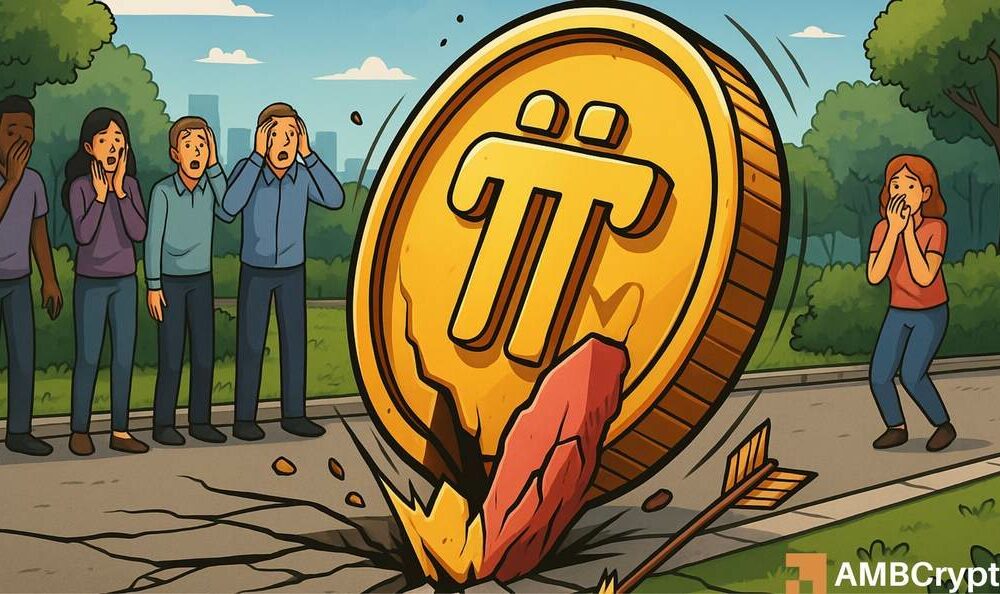Understanding the Current Landscape of Pi Network: Concerns and Future Outlook
The Pi Network, a cryptocurrency venture that gained significant attention after its launch in March, has recently faced severe criticism and skepticism. With the price of its native token, PI, plummeting over 90% from its peak, claims of a "rug pull" have resurfaced, stirring unrest among investors. This article takes a closer look at the recent developments concerning the Pi Network, its price trajectory, and what it may mean for investors moving forward.
A Plummeting Price and Market Cap
After making headlines with an impressive debut price of $2.79 and a market capitalization that peaked at nearly $18 billion, the value of the PI token has since succumbed to a steep decline. As of now, it trades below $1, with a recent low of just $0.26, dissipating over $16 billion from its market cap in a matter of months. Such a drastic drop has amplified concerns among investors, leading to assertions from various community members that the token’s behavior resembles that of a "rug pull"—a term used to describe a project that unexpectedly ceases to operate, leaving investors with worthless tokens. According to prominent crypto commentator Mr. Spock, the current price trajectory does indeed align with such claims.
The Role of Hype and Speculation
Initially, the rise of PI was buoyed by a strong wave of hype and speculative interest in cryptocurrencies. This enthusiasm, however, has started to wane as unmet expectations mounted. The problematic launch of a $100 million venture fund further fueled the controversies surrounding Pi Network. Many in the community feel disillusioned, claiming that funds meant to reinforce the ecosystem were redirected towards external ventures, which only exacerbated trust issues. This fallout impacted the price significantly, preventing any potential rebounds and resulting in a steady decline.
Community Sentiment and Accumulation Trends
Even amidst this negative backdrop, not all news is bleak. Recent data from Pi Scan indicates that some investors actively accumulate the token despite its declining price. In a single day, a net flow of $112.3 million was recorded, illustrating that more tokens were exiting exchanges than entering. This suggests a subset of the investorship remains optimistic about the coin’s future, viewing the current low prices as a buying opportunity. Yet, this optimism does not necessarily reflect the wider sentiment in the community, which remains skeptical due to the unresolved concerns about governance and transparency.
Derivatives Market and Speculative Interest
While some investors are still buying into the token, the derivatives market tells a different story. Reports indicate that speculative interest in PI has plummeted, with the open interest in futures contracts declining from nearly $120 million to approximately $20 million. Such a significant drop in open contracts demonstrates that traders are increasingly hesitant to take risks associated with PI, further indicating a broader sense of bearish sentiment surrounding the cryptocurrency. This lack of enthusiasm can often lead to protracted periods of price stagnation, compounding the existing issues faced by the token.
Inflationary Pressures and Supply Dynamics
Another factor contributing to PI’s subdued performance is the inflationary pressure correlated with its circulating supply. Since May, there has been an increase of over 1 billion tokens in circulation, which dilutes the existing value of the token. This supply growth issue is critical for investors to understand, as it signifies a potentially unsustainable inflation rate that may continue to exert downward pressure on the price. Unless the Pi Network team addresses these inflation concerns, the future of the token may remain bleak.
The Road Ahead for Pi Network
The outlook for Pi Network suggests that without swift and transparent actions from the development team to restore community trust, the token could continue on its downward path. Investor skepticism is palpable, and the lingering effects of inflation and speculation may further complicate any attempts at recovery. In the coming months, it is essential for the Pi Network to engage transparently with its community and resolve ongoing issues to reignite interest and confidence in the project. If not, the altcoin could struggle to regain footing in a continually volatile market.
In conclusion, while there are signs of life within segments of the investor community, overarching challenges must be addressed for Pi Network to regain any semblance of stability or growth. Investors should remain vigilant and informed about developments as they navigate this precarious landscape.


